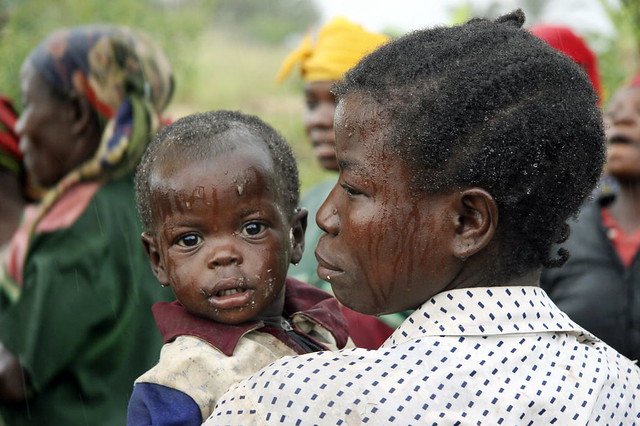10 Facts About Life Expectancy in Burundi

Burundi is a small, landlocked country situated in the heart of Sub-Saharan Africa and bordered by Tanzania, Rwanda and the Democratic Republic of the Congo. It is currently listed at number 185 out of 189 countries on the Human Development Index (HDI), which coincides with its status as one of the poorest countries in the world. HDI is determined by a variety of factors, including the average lifespan of a country’s inhabitants. Life expectancy can be a telling indicator of the social, economic and institutional challenges a country might be facing.
10 Facts About Life Expectancy in Burundi
- It’s relatively low—The CIA estimates the overall life expectancy in Burundi at about 61.4 years of age, while the U.N. Development Programme’s estimate is slightly lower at 57.6 years. Either way, the average life expectancy in Burundi is younger than the average age of retirement in the United States.
- Food insecurity is an issue—Between July and September 2018, the Integrated Food Security Phase Classification (IPC) determined that at least 1.4 million Burundians were living in the Crisis and Emergency phases of food insecurity. For many, these classifications translate into a lack of proper nutrition that can seriously impact health. Some measures are being taken to address this issue—for example, last year USAID’s Food for Peace initiative contributed $30 million in food resources to Burundians and Congolese refugees—but putting a greater emphasis on the introduction of innovative irrigation practices could have a more lasting impact.
- Childhood malnutrition has long-term effects—Perhaps the most visible effect of food insecurity in Burundi is malnutrition among young children. According to USAID, 56 percent of Burundian children under 5 experience stunted development and 29 percent are underweight. Underdevelopment from malnutrition can have lasting effects on both overall health and longevity, potentially resulting in shorter life expectancy.
- The population is outgrowing its resources—About 20 percent of Burundi’s population of 11 million people consists of children below the age of 5. This indicates a massive dependent population and a high potential for growth—in fact, the population is expected to double by 2050. In a country already struggling to support its inhabitants, rapid growth will mean spreading its resources even thinner and exacerbating issues like food insecurity. This trend, therefore, can indirectly impact life expectancy in Burundi on a variety of levels.
- There is a lack of reproductive health services—As evidenced by the above point, Burundi has one of the highest birth rates in the world at an average of 5.93 children per woman. According to the U.N.’s Human Development Report, 30 percent of Burundian women had an unmet need for family planning, and the prevalence of contraceptives (any method) among women of reproductive age was only 28.5 percent. The United Nations Population Fund (UNFPA) is taking some action to address the lack of reproductive health services. In 2018, UNFPA supported the development of 10 new health facilities providing emergency obstetric care. However, Burundi still lacks a comprehensive family planning program.
- Most of the population lives in poverty—With a GNI per capita of $702 per year, the majority of Burundi’s population lives in some degree of poverty. 90 percent of the employed population lives on less than $3.10/day, making it extremely difficult for working men and women to support their families and meet all of their needs. While the International Fund for Agricultural Development (IFAD) has been instrumental in implementing poverty reduction strategies in rural areas, much of the population continues to suffer from poverty on some level.
- HIV/AIDS reduction is still in progress—In 2016, there were 2,200 new HIV infections in Burundi, making the total number of citizens living with the disease about 84,000. The most high-risk groups continue to be sex workers and men who have sex with other men, with an HIV prevalence of 21.3 percent and 4.8 percent respectively. Between 2008 and 2011, the World Bank implemented the Second Multisectoral HIV/AIDS Project to capitalize on previous HIV reduction efforts; the project resulted in increased condom use and more readily available antiretroviral therapy. Because of such initiatives, HIV infections have decreased by 54 percent and AIDS-related deaths have decreased by 49 percent since 2010.
- Other major infectious diseases exist—Due to a tropical climate and a lack of immunizations, illnesses like malaria, typhoid fever, measles and hepatitis A continue to pose a problem for Burundians. These conditions, coupled with a physician density of only 0.05 physicians/1000 people, put the population at risk for premature death and can seriously impact life expectancy in Burundi.
- Environmental hazards hinder development—Burundi’s extreme climate puts it at risk for natural disasters like floods, droughts and landslides. Such hazards damage infrastructure, displace people from their homes and contribute to the issues of food insecurity and water scarcity during certain months of the year.
- It’s ultimately increasing—As a result of some of the initiatives discussed above, life expectancy in Burundi has increased from 48.1 years in 1990 to about 58 years in 2017. While this number is still significantly lower than that of countries like the United States, there has been a definite upward trend.
In conclusion, there are a variety of factors that contribute to a relatively low life expectancy in Burundi. By continuing to provide assistance to relief programs, it is likely that the average life expectancy will continue to rise.
– Morgan Johnson
Photo: Flickr
